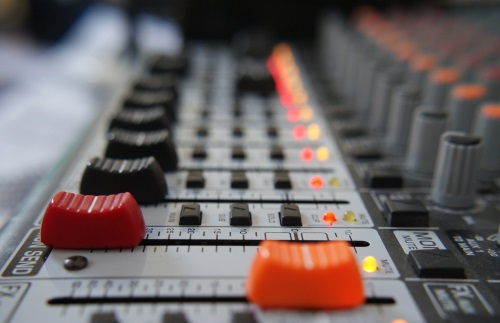
Sub-Mixers
Any conversation about small mixers should include sub-mixers. Sub-mixers get a bad rap, but they are an excellent solution to many small mixer problems, the most common being not enough input channels.
The logical use for sub-mixers is on things that can be grouped together – things like drum kits, horn sections, or backing vocals.
With a stereo sub-mixer, you can pan some inputs left, some others right, effectively giving you two sub-mixers. Sending the sub-mixers outputs to input channels on the main mixer transforms those input channels into additional sub-groups.
If your main mixer has sub-groups, you can also patch in your sub mixer there, and save the inputs on the main mixer for other things.
Insert To Bypass Mic Preamp
It’s becoming increasingly popular for artists or their engineers to carry around an esoteric front-end device. These devices almost always contain a microphone preamp as well as some combination of EQ and dynamics processing.
More often than not, the line inputs of an inexpensive mixer is the mic input padded down to line level. This means the fancy preamp is being hooked up to the console preamp, which is one preamp too many.
A specially constructed tip-ring-sleeve cable can bypass the mixer preamp completely by using the channel insert jack. The preamp end of the cable is wired tip/sleeve, the mixer end of the cable is wired ring/sleeve.
Please note that a cable constructed this way is for use with the most common unbalanced inserts that are tip send/ring return. For a mixer that’s configured ring send/tip return, both ends of the cable should have a tip/ring/sleeve connector wired tip/sleeve.
These cables, and any other cable wired in a non-standard fashion, should be very well labeled!
Many Happy Returns
Console returns are very often left unused. Most of us prefer the stereo input channels and/or the mic input channels, and for good reason. They have EQ and full routing capability, so what’s not to like?
Once again, for things like drum kit reverb where you are going for a “room vibe” type of effect that will be set and mostly left alone, the often overlooked console return works just fine. These are good places to plug in sub-mixers too.
Go Forth And Mix
These tricks are ways to squeeze big console performance out of a small console (or two). Again, some of them are not preferred practice, but they allow you to say “sure, no problem” instead of “I can’t do that.”
Now go forth and mix – big console or small.
Dave Dermont is a long-time working live sound mixer and a moderator of the ProSoundWeb Live Audio Board (LAB).
